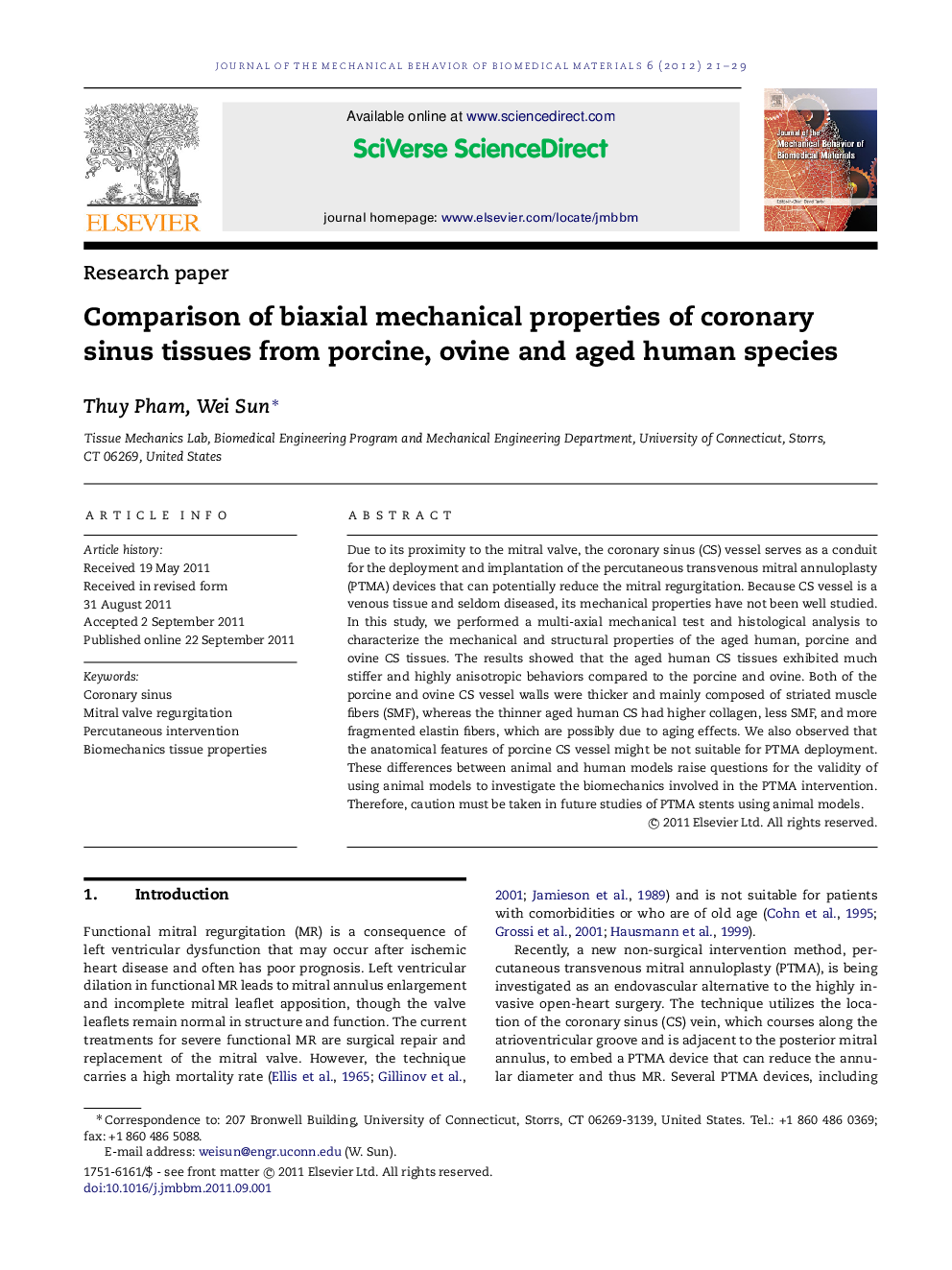| Article ID | Journal | Published Year | Pages | File Type |
|---|---|---|---|---|
| 811247 | Journal of the Mechanical Behavior of Biomedical Materials | 2012 | 9 Pages |
Due to its proximity to the mitral valve, the coronary sinus (CS) vessel serves as a conduit for the deployment and implantation of the percutaneous transvenous mitral annuloplasty (PTMA) devices that can potentially reduce the mitral regurgitation. Because CS vessel is a venous tissue and seldom diseased, its mechanical properties have not been well studied. In this study, we performed a multi-axial mechanical test and histological analysis to characterize the mechanical and structural properties of the aged human, porcine and ovine CS tissues. The results showed that the aged human CS tissues exhibited much stiffer and highly anisotropic behaviors compared to the porcine and ovine. Both of the porcine and ovine CS vessel walls were thicker and mainly composed of striated muscle fibers (SMF), whereas the thinner aged human CS had higher collagen, less SMF, and more fragmented elastin fibers, which are possibly due to aging effects. We also observed that the anatomical features of porcine CS vessel might be not suitable for PTMA deployment. These differences between animal and human models raise questions for the validity of using animal models to investigate the biomechanics involved in the PTMA intervention. Therefore, caution must be taken in future studies of PTMA stents using animal models.
